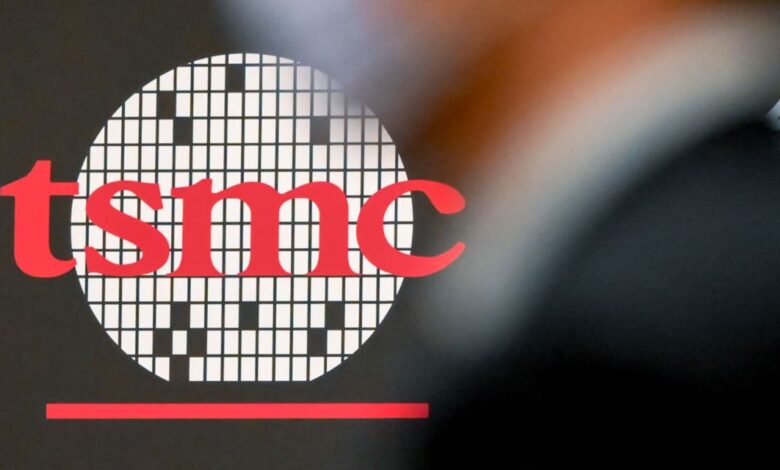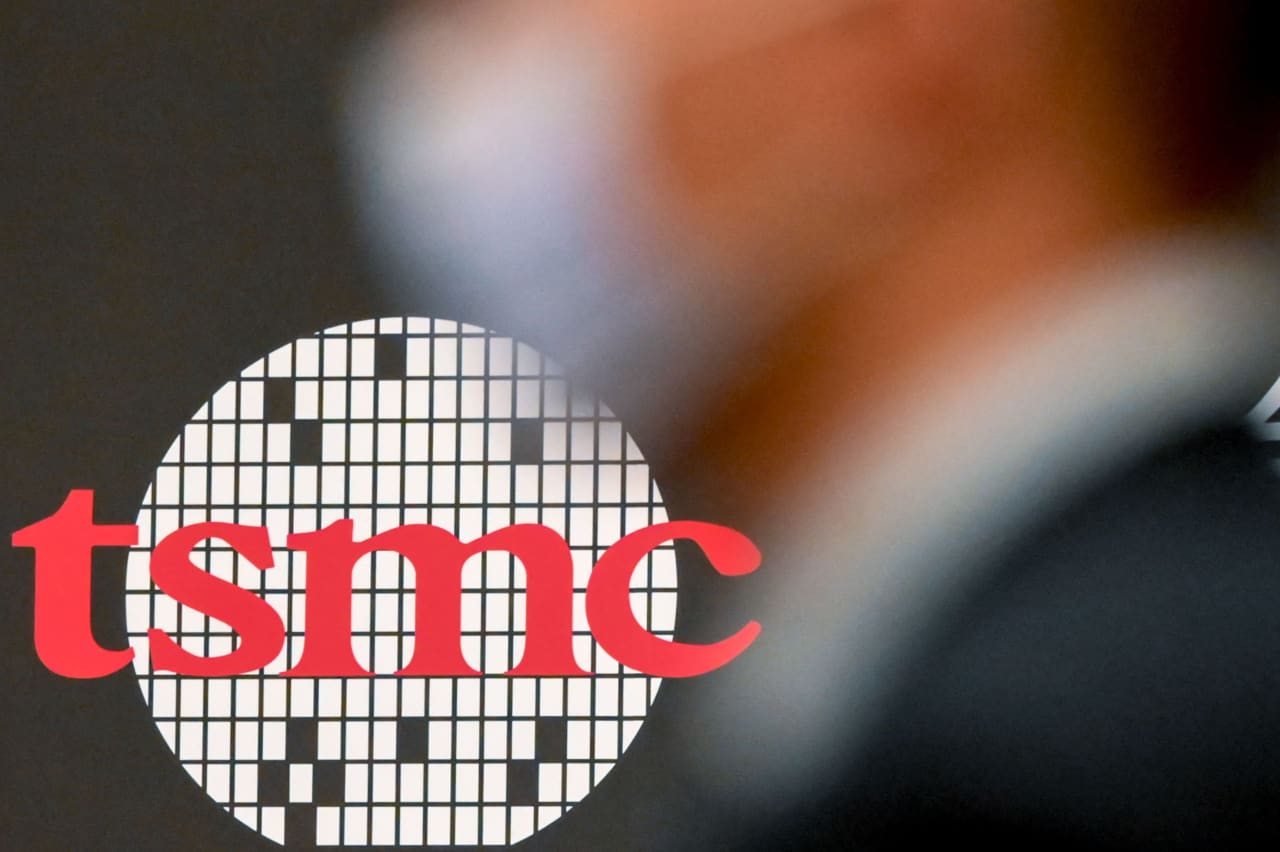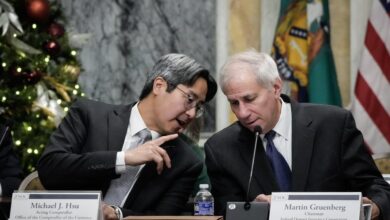Opinion: U.S.-China tensions over Taiwan threaten to derail Nvidia and other tech giants

The concentration of advanced semiconductor manufacturing in Taiwan has raised fears in the United States about the vulnerability of this supply chain should China blockade or invade the island. The U.S. CHIPS and Science Act seeks to address that vulnerability with $52 billion in subsidies to encourage semiconductor manufacturers to relocate to America.
But the legislation, as designed, will fall short of its objective; it may even weaken Taiwan’s most important industry, further threatening the island’s security.
Today’s semiconductor industry is dominated by specialized companies located around the world. Taiwan Semiconductor Manufacturing Co. Ltd. (TSMC)
TSM,
in Taiwan focuses only on contract manufacturing, primarily of high-end chips, whereas other equally important parts of the semiconductor ecosystem include U.S. companies such as Advanced Micro Devices Inc.
AMD,
Nvidia Corp.
NVDA,
and Qualcomm Inc.
QCOM,
(which only design chips); the lithography specialist ASML Holding
ASML,
ASML,
in the Netherlands; Japan’s Tokyo Electron Ltd.
8035,
(which makes chip-manufacturing equipment); and Britain’s Arm Holdings Plc
ARM,
(which produces software used to design chips).
All this specialization offers two main benefits. First, it means that each part of the global supply chain can focus and improve on what it does best, which benefits other parts of the supply chain. Second, global capacity has increased in all segments of the supply chain, which has made the industry more resilient to demand shocks.
The cost of specialization is that the industry is vulnerable to supply shocks. Although this problem is not isolated to Taiwan — since all segments of the supply chain are potential choke points — no other segment faces territorial claims by China. As a result, the U.S. and Japan have offered large subsidies to TSMC to relocate, and TSMC now plans to build new facilities in Kumamoto, Japan, and Phoenix, Ariz.
The facility in Japan will be completed as planned, and many of TSMC’s suppliers are also setting up there. But the Phoenix project is already substantially behind schedule, and fewer of TSMC’s suppliers have plans to locate there.
TSMC’s experience in Camas, Wash., (in the greater Portland, Ore., area) over the past 25 years casts further doubt on the promise of the Phoenix facility. Despite the initial hope that the Camas facility would become TSMC’s beachhead in the U.S. market, the company struggled to find the workers it needed to stay competitive. Even after a quarter-century of the same training and the same equipment, production costs there are 50% higher than in Taiwan. As a result, TSMC chose not to expand the Camas operation.
The fundamental problem is that while U.S. workers are skilled in chip design, the U.S. lacks workers with the desire or skills necessary for chip manufacturing. Yet specialized skills are critical in this domain. Workers must be meticulous, attentive to detail and dedicated to consistency, perfection, and timely production. They must have a strong command of the working principles of their equipment — much of which is highly advanced or customized — and of data in the field.
TSMC Phoenix will continue to struggle because there simply are too few U.S. workers with the skills necessary for semiconductor manufacturing. Seeking economic security by relocating semiconductor manufacturing to the U.S. is thus an “expensive exercise in futility,” as TSMC founder Morris Chang warned in 2022. The $52 billion in the CHIPS Act may seem like a large number, but it will not be enough to create a self-sustaining semiconductor ecosystem in Phoenix.
Industrial policy can work, but only under the right circumstances. TSMC is a testament to that. Taiwan’s industrial planners explicitly chose a niche that built on their existing strengths in manufacturing. They did not attempt to replicate Intel Corp.
INTC,
the leading semiconductor company at the time, because too few Taiwanese workers had the necessary design skills. By the same token, Japan’s subsidies to lure TSMC are likely to be successful, because Japan already has an ample supply of skilled manufacturing workers.
Like war, industrial policy has many unintended consequences. The availability of free money risks changing TSMC from a company that has relentlessly focused on innovation into one that is more concerned with securing subsidies. The longer TSMC tries to fix its problems in Phoenix, the less attention management will have for other matters. Those problems are so great that they reportedly led to the resignation in December of TSMC Chairman Mark Liu.
The CHIPS Act poses three big risks. For starters, if TSMC does lose its focus on innovation, the biggest losers will be its customers and suppliers, most of which are U.S. firms. The broader AI revolution — much of it powered by TSMC-made chips — will grind to a halt. Moreover, TSMC may reduce its investments in capacity in Taiwan, which will make the whole industry less resilient to demand shocks.
Lastly, TSMC may lose its way so much that another company replaces it as the leader in advanced semiconductor manufacturing. Many in Taiwan already view the CHIPS Act as an attempt by the U.S. to grab Taiwan’s technology. Taiwanese have taken umbrage at statements by U.S. politicians who claim that Taiwan is a dangerous place to do business, or that the U.S. needs to draw up plans to bomb TSMC’s plants and airlift its executives to the U.S. in the event of a Chinese invasion.
TSMC’s fall from its dominant position would further reinforce the sense that the U.S. ultimately does not care about Taiwan. Yet if Taiwan’s economy and security are undercut, the harm done to America’s own national security would outweigh any gain from achieving greater (and costlier) semiconductor capacity in the U.S. Taiwan’s security is ultimately America’s security.
Although well-intentioned, the CHIPS Act is poorly designed. Rather than creating a sustainable cluster of semiconductor manufacturing in the U.S., it is likely to cause long-run damage to TSMC and, ultimately, to Taiwan’s economy. It would be far wiser for the U.S. to adopt an approach that protects its own economic security and strengthens Taiwan’s at the same time. Committing to defend Taiwan and building capacity in countries such as Japan (where operations are less likely to damage TSMC’s business) could be such a strategy.
Chang-Tai Hsieh is professor of economics at the University of Chicago. Burn Lin, dean of the College of Semiconductor Research at National Tsinghua University, is a former vice president of TSMC. Chintay Shih, a professor at National Tsinghua University, is a former president of the Industrial Technology Research Institute.
This commentary is also signed by: Tainjy Chen, Dean of the Taipei School of Economics and Political Science at National Tsinghua University and a former minister of national development for Taiwan; Huang-Hsiung Huang, Chairman of the Taipei School of Economics and Political Science Foundation, former chair of the Transitional Justice Commission, and former member of the Control Yuan and the Legislative Yuan in Taiwan; W. John Kao, President of National Tsinghua University; Hans H. Tung, Professor of Political Science at National Taiwan University; and Ping Wang, Professor of Economics at Washington University in St. Louis.
This commentary was published with the permission of Project Syndicate — How America’s CHIPS Act Hurts Taiwan.
More: Tech stocks likely headed for a pullback. These 5 charts show their momentum is starting to fade.
Plus: Just two other chip stocks share this advantage with Nvidia
Source link





